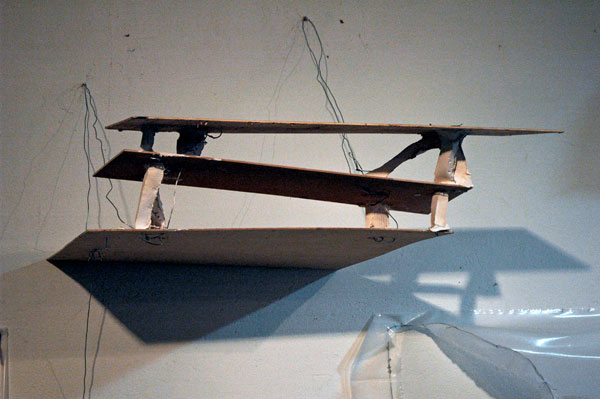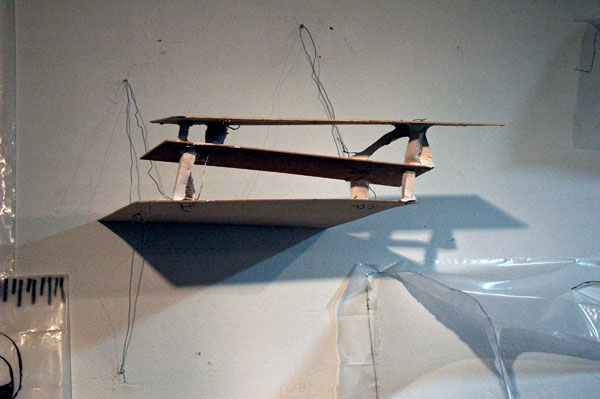

two images of the wall in John Wallbank's studio
A photograph of a work of art, or for that matter a visual or sound recording of a work of art, is never the art which it tries to represent, even if it might in some extraordinary instances become art in its own right.
And yet photographs have a life of their own. If only because of a physical distance from the object and the fact that they're quite separate and distinct from the eye, mind or voice of its creator, the photographer's own eye, mind and ears always introduce something to any work of art, whether a visual, performance or musical piece. This is the case even for a more casual viewer unencumbered with a recording device of any kind: Every viewer sees something a little different. Photographs of works of visual art, qua documents, are not the works they describe, but they can frequently add an additional dimension, sometimes aesthetic, sometimes intellectual, to what the artist has left us.
In the case of the odd dynamic of the light in the images above, an arguably happy accident which I couldn't at first explain has added a ghostly element to what I intended to be only a document of John Wallbank's sculpture as I encountered it several days after my first visit to his space in the Triangle Arts studio program. After taking the first image I looked at the small screen on the rear of my camera. On that scale I couldn't identify what the fog-like area was. Thinking it was light bouncing around my lens, I took three more shots, but the same hazy area showed up on each one and I shared them and my puzzlement with Wallbank. Only this afternoon, while looking at all of the images on my laptop screen, did I see that the lighter-colored areas on the lower right were simply the part of the wall not shaded by the sculpture's thin plywood platform. They represented a more direct light coming from the window out of the camera frame on the right.
I deny any conscious responsibility for the cubist display in these pictures. Although I thought until a few moments ago that it was the accident of an unusual play of light which happened to be very friendly to both Wallbank's use of found materials and to his wonderful creations, I now imagine that in some way the artist anticipated the effect - and many others like it not recorded here.
Either way, the work would not look the same to the next person who saw it or photographed it, or even to the artist himself, as I expect he and most artists would admit.